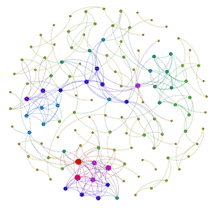Biography of the lab Principal Investigator: Zhanshan (Sam) Ma received his double PhDs in Computer Science, and Entomology in 2008, and 1997, respectively, both from the University of Idaho (UI), USA. In November 2010, he was retained as a Professor and Principal Investigator by Kunming Institute of Zoology (KIZ), the Chinese Academy of Sciences (CAS) through “The Elite 100 Scientists Program” of the CAS. Prior to joining in KIZ, he was a Research Scientist (in Computational Biology & Computer Science) at UI. He was a senior network and software engineer from 1998 to 2006 in the computer industry in Silicon Valley, USA. Dr. Ma has been keeping dual track publishing in both Computer Science and Biology with more than 70 peer-refereed papers in premier platforms such as IEEE Transactions on Reliability, Science Translational Medicine, The ISME Journal. He is a member of London-based “Faculty 1000 of Biology and Medicine”.
Email: ma@vandals.uidaho.edu
Towards a Unified Theory for Reliability, Survivability, and Resilience of Complex Networks
byZhanshan (Sam) Ma, Springer 2014 (in Press)
The monograph for the first time presents a unified treatment of three tightly coupled fields: reliability, survivability, and resilience, which underlie many critical problems in diverse scientific and technological fields including engineering reliability, computer networks, biological/ecological systems, critical national infrastructure protection, strategic information warfare, financial stability, as well as emergency response and management. The author identified and/or developed a set of mathematical and computational approaches to the analysis and modeling of the three above-mentioned areas in a coherent manner by integrating survival analysis, dynamic hybrid fault models, and evolutionary game theory. The treatment takes advantages of transdisciplinary approaches by drawing biological/ecological inspirations and integrating computational, mathematical and statistical models, to develop a unified architecture and set of corresponding methods for studying the reliability, survivability and resilience of diverse complex network systems such as wireless sensor networks (WSN), aerospace prognostic and health management (PHM), animal communication networks, financial networks, and human microbiome networks.
Highlights:
Publications:
1. Zhang ZG, Geng JW, Tang XD, Fan H, Xu JC, Wen XJ, Zhanshan(Sam) Ma*,Peng Shi*. 2013. Spatial heterogeneity and cooccurrence patterns of human mucosal associated intestinal microbiota. The ISME Journal, doi:10.1038/ismej.2013.185
2. Zhanshan (Sam) Ma. 2013. Stochastic Populations, Power Law, and Fitness Aggregation in Genetic Algorithms. FundamentaInformaticae, vol. 122, pp173-206.
3. Zhanshan (Sam) Ma. 2013. First passage time and first passage percolation models for analyzing network resilience and effective strategies in strategic information warfare research. I. J. Information and Computer Security. 5(4): 334-358.

Monographs
An Introduction to Bioinformatics)
Science Press, Beijing, in Press 2014)
Zhanshan (Sam) Ma et al.
Part I. Computational Foundations of Bioinformatics
1. Multidisciplinary Framework of Bioinformatics
2. Computational Foundation of Bioinformatics
3. Statistical Bioinformatics
4. Applications of Computational Intelligence
5. Network Biology: Algorithms and Software Tools
Part II. Bioinformatics Supporting –Omics Technologies
6. Genome Assembly: Algorithms and Software
7. Bioinformatics Analysis of Microarray Data
8. Bioinformatics Pipeline for Metagenomics Research
9. Bioinformatics Analysis of Transcriptomics Data
10. Bioinformatics Tools for Proteomics Research
11. Bioinformatics and Mathematical Modeling for Metabolomics
12. Coalescent and Phylogenetics Trees
Part III. Applications
13. Computational Epigenetics
14. Computational Drug Discovery
15. Single-Cell & Single-Molecular Sequencing Techniques
16. Medical Ecology, Cancer Genomics and Personalized Medicine
Lab Staff
Staff
Dan-Dan Ye,Research Associate
Ping Dong,Research Associate
Graduate Students
Qiong Guan,2011;Meng-Meng Fan,2012;Lian-Wei Li, 2012;Ya-Li Wang, 2013;Hua-Yang Tang,2013
